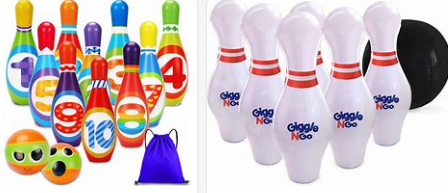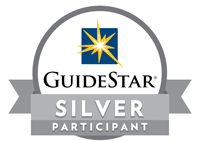For our rotation on The Last Supper we wanted them to find and learn as much information as possible about the Last Supper, including some of the political, cultural and religious issues at the time and how this experience of the Disciples became our celebration of Holy Communion. Because of this we used a compilation of the story and information from all 4 Gospels.
For this "Games" Workshop had the students become "Detectives."
- First they had to be Detectives to discover the 5 W questions: Who, Where, What, Why and When. They do this while the Scripture was read.
- After being detectives, the class did a crossword puzzle that I made up and a word search.
The Last Supper Bible Skills and Games Workshop
Scripture Passage:
Matthew 26:17-30
Summary of Lesson Activities:
The students will learn some important things about The Last Supper: who the main characters are, where and when this event happened, what happened and why it’s important. They will become sleuths who investigate to find these answers. They will do a Word Search and Crossword Puzzle to complete their Detective work.
Lesson Objectives:
- The Last Supper was a Passover celebration
- The Last Supper was the time when Jesus instituted “Holy Communion”: When we eat the bread and drink the cup we “Do this in remembrance of him” and in remembrance of the Last Supper (also called “The Lord’s Supper)
- The Passover meal took place in Jerusalem in an Upper Room because Jesus had to hide from the authorities. Their gathering was a secret.
- The unleavened bread they ate was the symbol of Jesus’ broken body.
- The wine was a symbol of the blood of Jesus and was a sign of the “New Covenant”—God had a covenant with Abraham and Isaac that saw the Israelites through the Old Testament. The sacrifice of Jesus on the cross is the beginning of a New Covenant that God has with His people.
- Judas is the one who betrays Jesus
- The United Methodist Church uses grape juice instead of wine so that everyone, even those who can’t have wine, can receive communion. It’s important that the communion table be open to all.
- In our congregation we receive communion by “Intinction”—dipping the bread into the wine—because we have too many people to pass a cup around and we know a lot about germs now.
- The Disciples are also called The Apostles
- The Foot Washing ceremony that Jesus does for his Disciples is told to teach us that we should be servants of each other.
Supplies List:
- Make a poster listing the vocabulary words and the 5 W’s
- Create the three envelopes used in the Opening: Bible passage, what we will learn, and a pack of "Detective Notepads and Pencils"
- Creative and make copies of Crossword Puzzle and Word Search (see below)
- Pencils
- Purchase or create Detective Notepads, one per student. They will use these to write their Bible story detective notes on them.
Alternatively, you may give each student a pack of POST IT NOTES, five different colors to use in the Detective Post Game (if you are using that option, see below)


The 5 W’s
WHO? Who are the main characters in this story?
WHEN? When does this story take place?
WHERE? Where does this story take place?
WHAT? What are the major things that happen in this story?
WHY? Why do all 4 gospel writers include this story in their book? What is important about it?
Vocabulary
- “Passover” = “Feast of the Unleavened Bread”
- “Passover” Meal = “The Last Supper”
- “Last Supper” = “Lord’s Supper”
- The Last Supper= Holy Communion
- Foot washing = Servant
- “Old Covenant” from the Old Testament vs. “New Covenant” that Jesus creates through his crucifixion
Lesson Plan
Opening:
Introduce yourself to the students in your class.
Tell them that you have HIDDEN THREE ENVELOPES in the classroom that they must find. One has the Bible story for today. The second has "what we hope to learn" written in it. The third larger envelope contains all the "Detective Note Pads" (or post-its) and pencils they will use during their work. Give them a minute to find the envelopes and then open them.
Say: Today you are all going to be Detectives. We’re going to do an investigation of the story of The Last Supper. The Last Supper is the story of Jesus and his Disciples right before Jesus is crucified.
Distribute the notepads/post-its and explain how they are to use them.
Let's Begin!
Ask: Where in the Bible do we find stories about the life of Jesus? (New Testament). Who are the men who wrote about Jesus? (Matthew, Mark, Luke and John). What are their books called? (The Gospels). What does the word “gospel” mean? (Good news)
Say: The story of The Last Supper is told by three of the Gospel writers: Matthew, Mark and Luke. The Gospel writer, John, doesn’t tell the story of the Last Supper but he tells the story of one thing that happens during the Last Supper. This morning we are going to read bits and pieces of each of their versions.
Detective Activity #1: The 5 W's of the Story
Say: Instead of me just reading the story to you, you are going to be sleuths. A good detective will look for facts as well as the meanings of things. So, while I read this story to you I want you to listen for the 5 W’s: Who, When, Where, What and Why? These are also the questions a newspaper reporter asks when writing a story about something. (Pass out paper and pencils) I’m going to read the story slowly so you can listen for the answers to the 5 W questions. Afterward we can go over it. (Make sure you point out the poster to which they can refer. In the following passages I’ve highlighted where I think the important information is. As well as words that will be used in the games.)
Scripture Reading:
Read slowly and pause after every sentence or two to let students write their answers.
Mark 14:12-16 On the first day of the Feast of Unleavened Bread, when it was customary to sacrifice the Passover lamb, Jesus’ disciples asked him, “Where do you want us to go and make preparations for you to eat the Passover?” 13 So he sent two of his disciples, telling them, “Go into the city…Say to the owner of the house …‘The Teacher asks: Where is my guest room, where I may eat the Passover with my disciples?’ 15 He will show you a large upper room, furnished and ready. Make preparations for us there.” 16 The disciples left, went into the city and found things just as Jesus had told them. So they prepared the Passover.
John 13: 1-5, 12, 15 1-3 Jesus knew on the evening of Passover Day that it would be his last night on earth before returning to his Father. During supper the devil had already suggested to Judas Iscariot, Simon’s son, that this was the night to carry out his plan to betray Jesus. Jesus knew that the Father had given him everything and that he had come from God and would return to God. And how he loved his disciples! 4 So he got up from the supper table, took off his robe, wrapped a towel around his loins, 5 poured water into a basin, and began to wash the disciples’ feet and to wipe them with the towel he had around him. 12 After washing their feet he put on his robe again and sat down and asked, “Do you understand what I was doing? 15 I have given you an example to follow: do as I have done to you.
Matthew 26:20-25 20-21 That evening as he sat eating with the Twelve, he said, “One of you will betray me.” 22 Sorrow chilled their hearts, and each one asked, “Am I the one?” 23 He replied, “It is the one I served first. 24 For I must die just as was prophesied, but woe to the man by whom I am betrayed. Far better for that one if he had never been born.” 25 Judas, too, had asked him, “Rabbi, am I the one?” And Jesus had told him, “Yes.”
Luke 22: 14-15, 19-20 14 When the hour came, Jesus and his apostles reclined at the table. 15 And he said to them, “I have eagerly desired to eat this Passover with you before I suffer. 19 And he took bread, gave thanks and broke it, and gave it to them, saying, “This is my body given for you; do this in remembrance of me.” 20 In the same way, after the supper he took the cup, saying, “This cup is the new covenant in my blood, which is poured out for you.”
Ask the students to share their answers.
If you are using Post-Its instead of Notepads, have students step forward to "post" their answer to each of the 5 W's on the board under the corresponding "W" (putting their "who" answer in the "Who" column, and so forth). Remember that each answer/column is an opportunity to add insight and ask follow up questions.
The 5 W’s Answer Key:
WHO? Who are the main characters in this story?
- Jesus, the twelve Disciples, Judas the betrayer
WHEN? When does this story take place?
- Evening on the first night of Passover, or the Feast of Unleavened Bread
WHERE? Where does this story take place?
- In an upper room in Jerusalem so that Jesus is hidden from the authorities who will arrest him.
WHAT? What are the major things that happen in this story?
- Jesus and the Apostles have a Passover Seder (which means “order” because the items were eaten in a very specific order )
- Jesus washes the disciples feet
- Jesus says Judas will betray him
- Jesus breaks the bread and says “Take, eat, this is my body. Do this in remembrance of me.”
- Jesus takes the cup of wine, shares it and says it is his blood that will create a new covenant
WHY? Why do all 4 gospel writers include this story in their book? What is important about it?
- Jesus shows, through the foot washing, that the master will be the servant
- Jesus creates our ritual of Holy Communion
- Jesus tells the disciples that, like the Passover lamb, he will suffer and be sacrificed very soon after the Seder.
- It reveals God’s plan of a new covenant created by Jesus’ blood—the new covenant replaces the old one that God made with the ancient Hebrews in the Old Testament.
Detective Activity #2: Crossword Puzzle
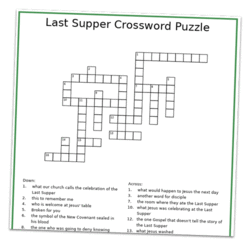 Have students complete the puzzle. You can do this as a team competition, Giving each team 10 seconds to come up with the correct answer before the next team gets a chance to complete it.
Have students complete the puzzle. You can do this as a team competition, Giving each team 10 seconds to come up with the correct answer before the next team gets a chance to complete it.
Note: Cat didn't include a copy of her puzzle, so we created our own at https://www.education.com/. You can create up to 3 for free! Ours is attached to this lesson along with the answer key.
Detective Activity #3 Word Search
If there is not enough time they can take the Word Search paper home with them.
Cat didn't include her Wordsearch (she used software), but you can easily make one at a number of websites, such as education.com or wordmint.com.
Closing:
Have the Detectives Summarize what they learned about Jesus and the Last Supper. Close with a prayer.
Here are some "additional" Crossword clues you could create a puzzle about at education.com.
- Another title for the “Last Supper” Lord’s Supper
- What Jesus gave his blood to create New Covenant
- Passover bread was this Unleavened
- Jesus hung on the cross to ____ us. Save
- In United Methodism we use this instead of wine so everyone can share in the ritual of Communion. Grape Juice
- The Gospel writer whose book is the first in the New Testament Matthew
- During Communion we use a _____ of bread. Loaf
- A Gospel writer Mark
- We say this at the end of every prayer Amen
- In a foot washing ritual we _____ the feet. Bathe
- Jesus’ death saves us from this Sin
- Gospel Writer Luke
- Homonym for “two” To
- During the Lord’s Supper the bread was _____. Torn
- “Seder” means “_____”. Order
- When Jesus broke the bread he foreshadowed this. Crucifixion
- Jesus knew that Judas would _____ him. Betray
- In United Methodism we use grape juice instead of wine because it is important to us that we are this: Open to All
- The number of Apostles Twelve
- Jesus’ death created a new _____ of covenant. Form
- Jesus’ sacrifice will make us ______. Whole
- Jesus was __________ on the cross. Sacrificed
- The wine is served in a _____. Cup
- The Last Supper was in an Upper room because Jesus needed to be _____. Hidden
- The fourth Gospel writer. John
- The Passover Seder took place at this time of day. Evening
- The part of the Bible where we learn about the life of Jesus. Gospels
A lesson written by rotation.org member Cat Blue
and enhanced by members of the Rotation.org Content Team
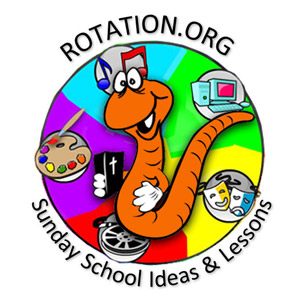
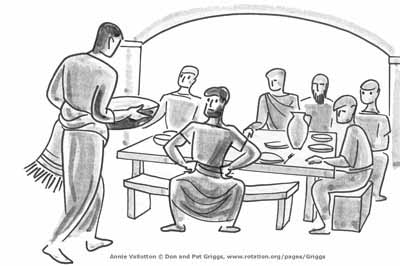 This forum is part of Rotation.org's
This forum is part of Rotation.org's 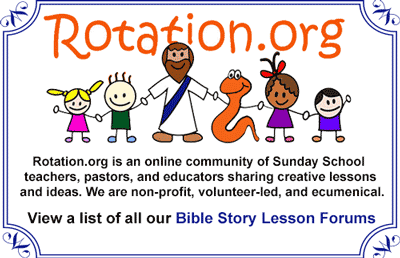
 Students will play "Password" -- a party game in which they give clues to each other to help their team or partner guess the word from the Last Supper story they clue-giver has been given. See and adapt the word list below!
Students will play "Password" -- a party game in which they give clues to each other to help their team or partner guess the word from the Last Supper story they clue-giver has been given. See and adapt the word list below!

